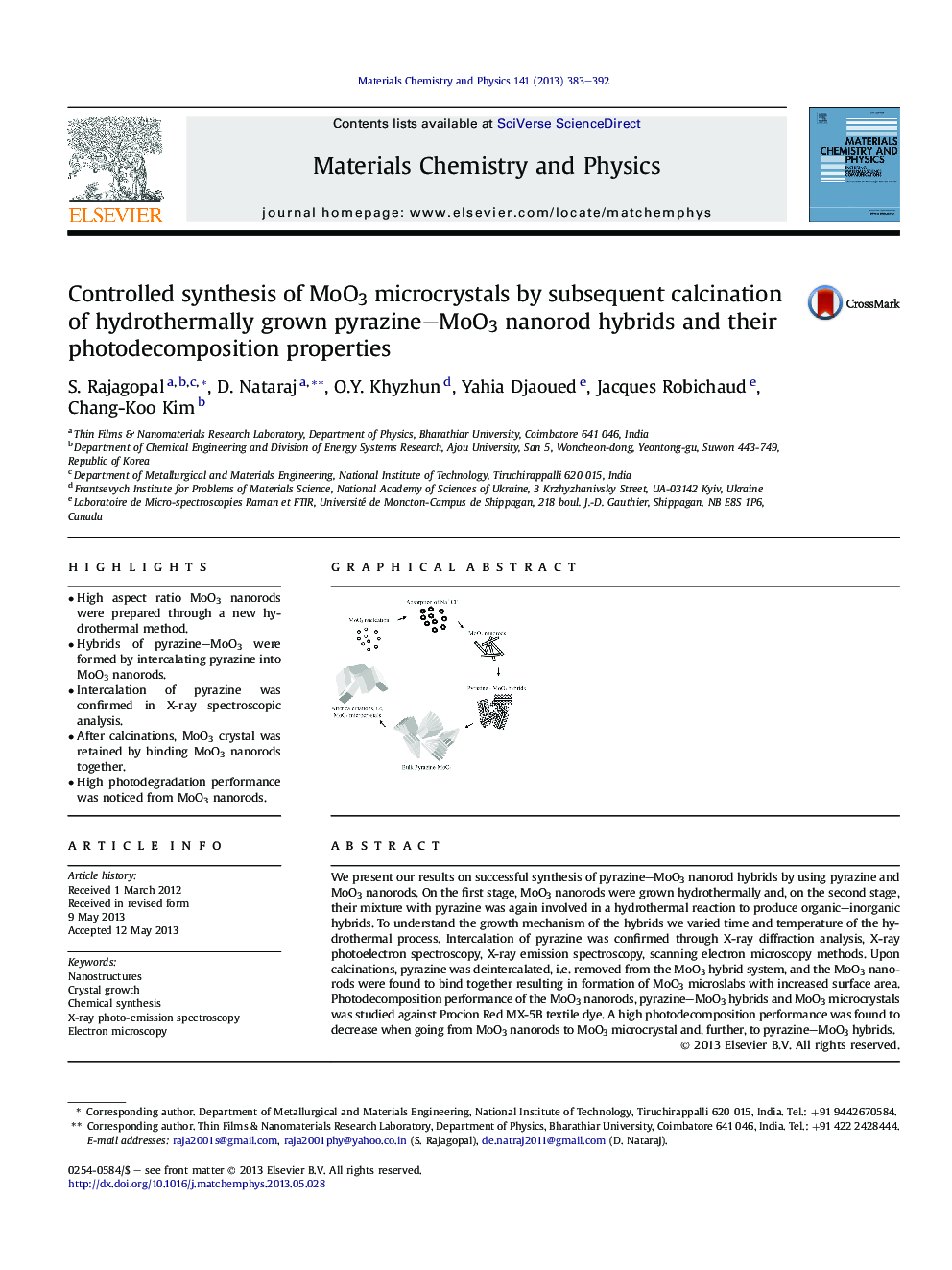| Article ID | Journal | Published Year | Pages | File Type |
|---|---|---|---|---|
| 1522677 | Materials Chemistry and Physics | 2013 | 10 Pages |
•High aspect ratio MoO3 nanorods were prepared through a new hydrothermal method.•Hybrids of pyrazine–MoO3 were formed by intercalating pyrazine into MoO3 nanorods.•Intercalation of pyrazine was confirmed in X-ray spectroscopic analysis.•After calcinations, MoO3 crystal was retained by binding MoO3 nanorods together.•High photodegradation performance was noticed from MoO3 nanorods.
We present our results on successful synthesis of pyrazine–MoO3 nanorod hybrids by using pyrazine and MoO3 nanorods. On the first stage, MoO3 nanorods were grown hydrothermally and, on the second stage, their mixture with pyrazine was again involved in a hydrothermal reaction to produce organic–inorganic hybrids. To understand the growth mechanism of the hybrids we varied time and temperature of the hydrothermal process. Intercalation of pyrazine was confirmed through X-ray diffraction analysis, X-ray photoelectron spectroscopy, X-ray emission spectroscopy, scanning electron microscopy methods. Upon calcinations, pyrazine was deintercalated, i.e. removed from the MoO3 hybrid system, and the MoO3 nanorods were found to bind together resulting in formation of MoO3 microslabs with increased surface area. Photodecomposition performance of the MoO3 nanorods, pyrazine–MoO3 hybrids and MoO3 microcrystals was studied against Procion Red MX-5B textile dye. A high photodecomposition performance was found to decrease when going from MoO3 nanorods to MoO3 microcrystal and, further, to pyrazine–MoO3 hybrids.
Graphical abstractFigure optionsDownload full-size imageDownload as PowerPoint slide
